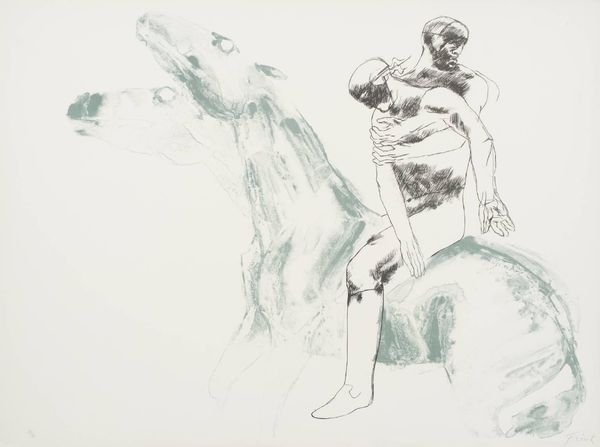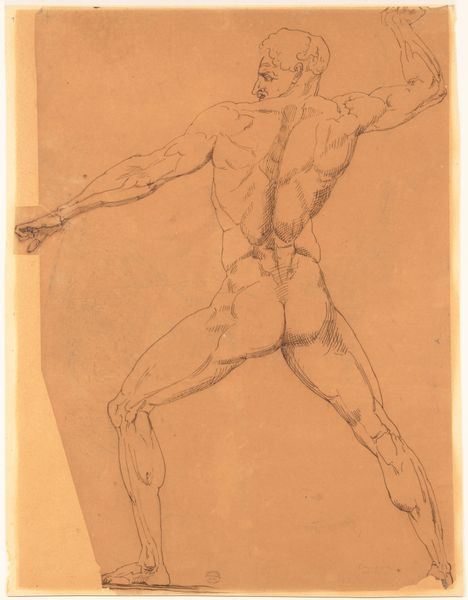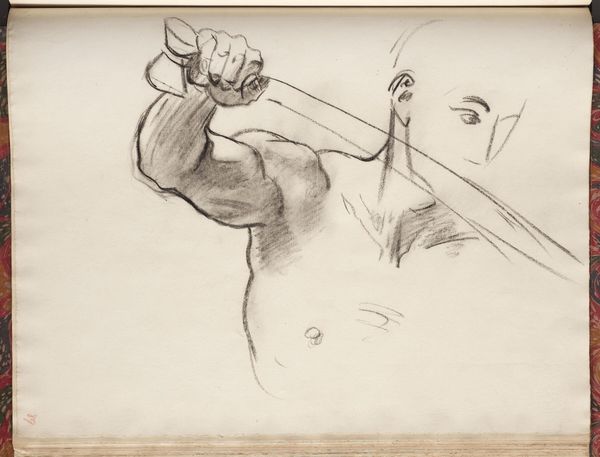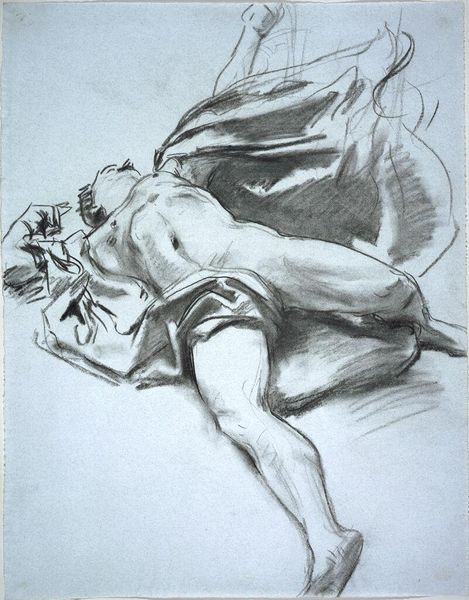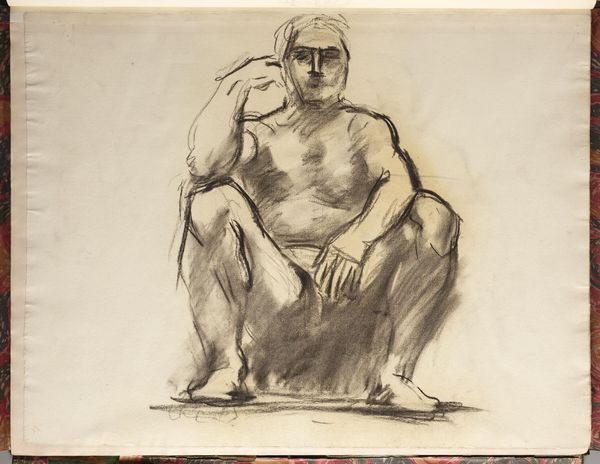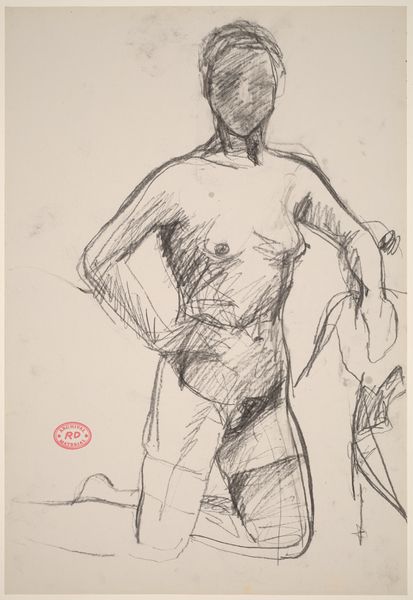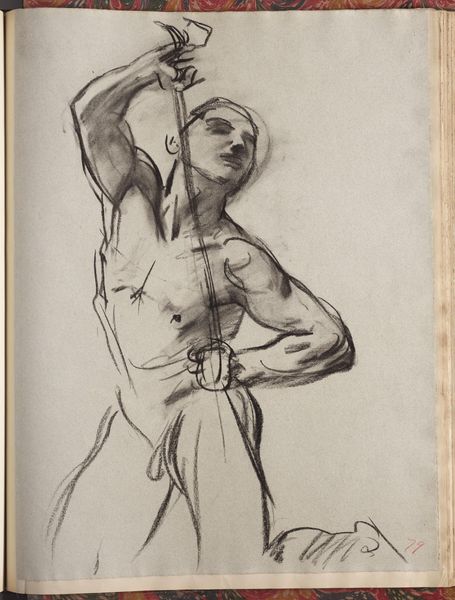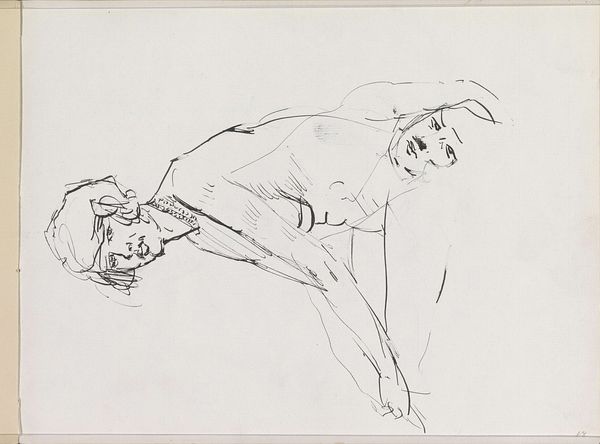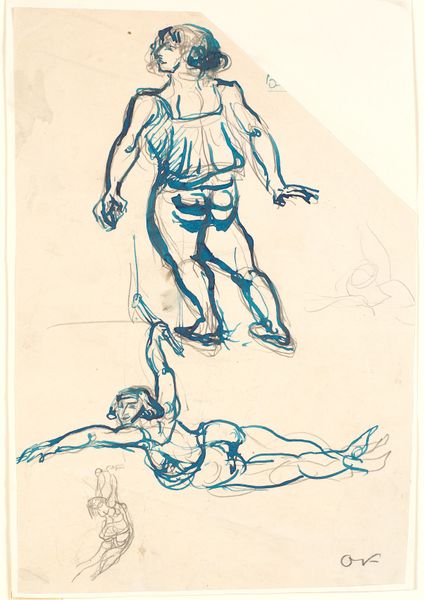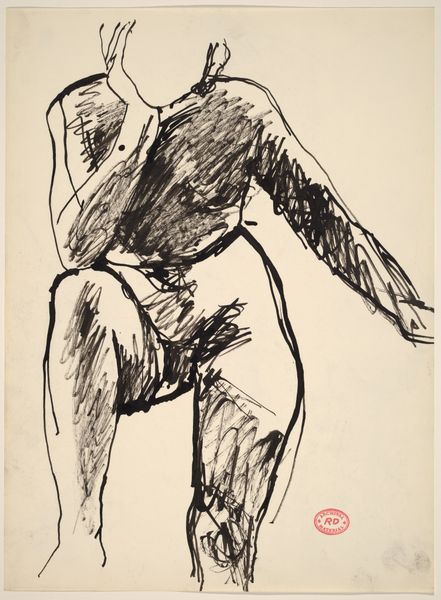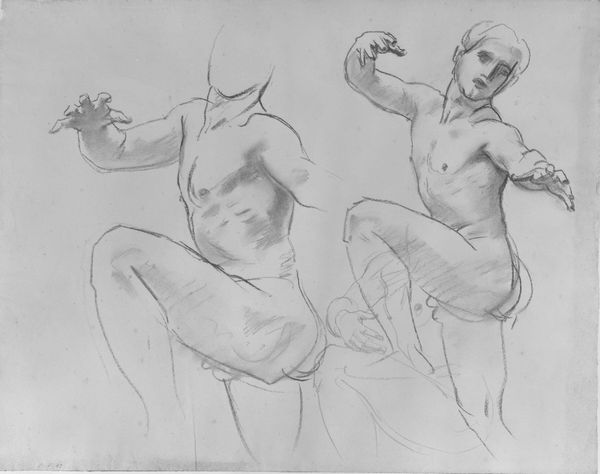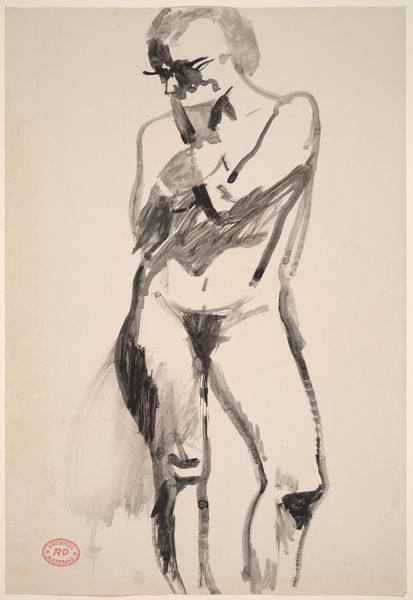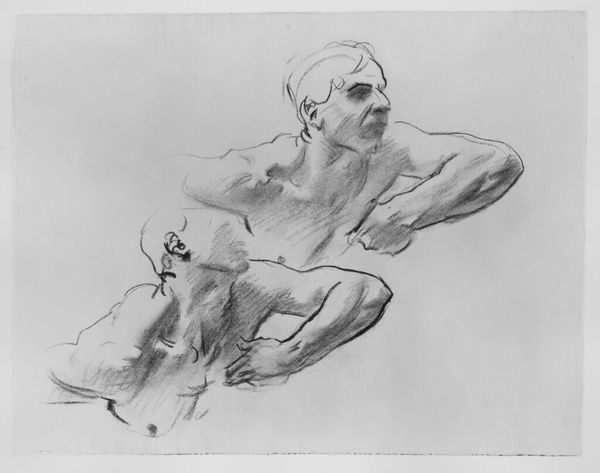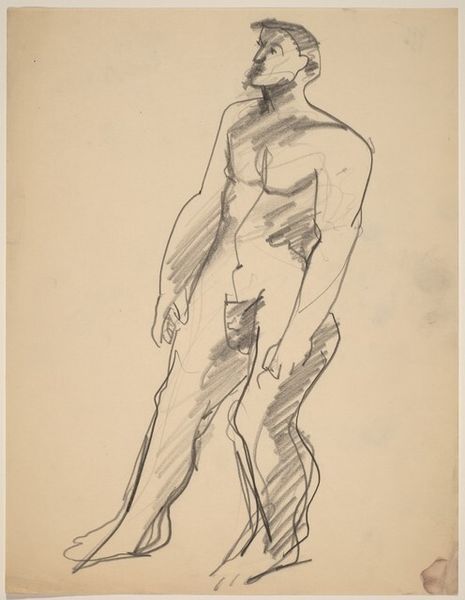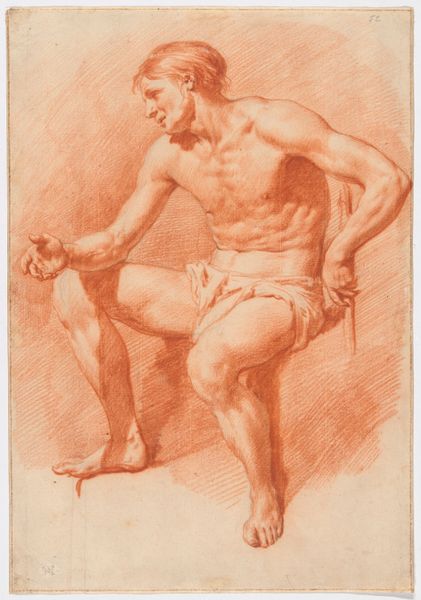
Copyright: Modern Artists: Artvee
Editor: Here we have LeRoy Neiman's "Muhammad Ali," likely from the 1960s. It's a vibrant ink drawing, and the subject's poised stance exudes confidence. What historical contexts informed this type of figuration in Neiman's work? Curator: Neiman thrived documenting celebrity culture. His images, often rapidly sketched, elevated the spectacle *around* the event as much as the event itself. Ali, especially during the 60s, became a lightning rod for conversations around race, religion, and anti-war sentiment. The confident pose is key. How does it speak to you? Editor: It feels like the drawing captures a moment of anticipation before a fight – a readiness, a symbol of Black power on the rise. But it's a somewhat romanticized, simplified vision, right? Curator: Precisely. Consider the limited color palette: browns, reds. These choices, beyond aesthetic, create a graphic impact, making it instantly reproducible and easily circulated through mass media. Was Neiman creating fine art or popular iconography? Where did the two meet, particularly concerning portrayals of Black athletes at this moment? Editor: That makes me rethink the purpose of it. I initially saw individual strength, but it was made to represent larger groups via distribution. Is Neiman attempting to empower or merely capitalize on cultural zeitgeists? Curator: It's probably both. His skill was recognizing and capitalizing on emerging cultural trends. He was documenting a transformative era, while consciously playing his role in promoting specific readings of the culture and its icons like Ali. So, what are your takeaways about this drawing now? Editor: That understanding the political context transforms how we read the pose, colors and artist's intention; that is, how the museum system further distributes it. Thanks!
Comments
No comments
Be the first to comment and join the conversation on the ultimate creative platform.
